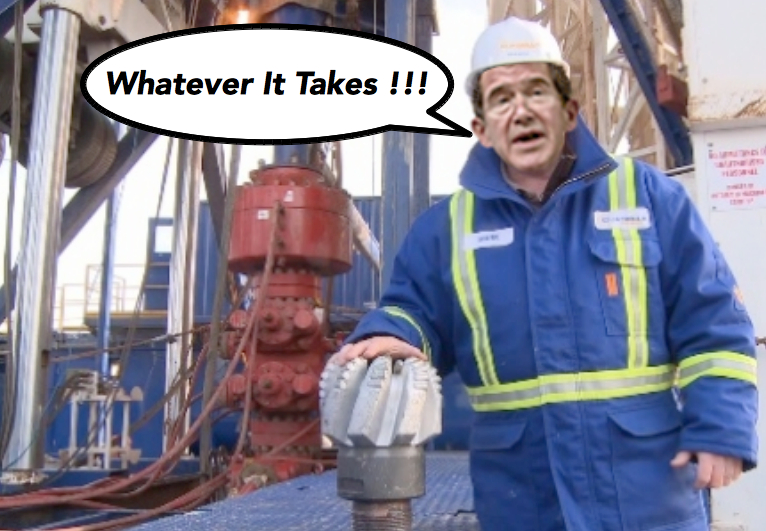 Cuadrilla Chairman and government employee John Browne has been out in public recently. In an interview with the UK’s Guardian, the Cabinet Office non-executive said he would invest “as much as it takes” to launch shale gas in the UK.
Cuadrilla Chairman and government employee John Browne has been out in public recently. In an interview with the UK’s Guardian, the Cabinet Office non-executive said he would invest “as much as it takes” to launch shale gas in the UK.
Unsurprisingly, the Fracking Czar began blowing his trumpet just as Cuadrilla entered final negotiations with new investors (see p2 of linked pdf).
Yet despite willy-waving by the Lord of Madingley, serious questions confront potential investors (even while the rest of us have to stomach his conflicts of interests). The company’s methodology in ascertaining how much gas it can pull out of the ground (‘flow rates’ in industry-speak) is highly dubious because it’s sampling the gas via a single well. It is also attempting to base these estimates on a technology it does not intend to use.
To calculate flow rates, the company was initially looking to do 5 test wells in the next eighteen months or so (see comments by ex-CEO Mark Miller to Energy Minister John Hayes on p29 of this recently released Freedom of Information request). The company still plans to stick to that timetable (see the recent AJ Lucas filing to the Australian Stock Exchange: “Fininalisation of the Cuadrilla business plan remains on track for the end of 2014.”) yet instead of five wells the company now intends to test just one well: it’s hole at Beaconshall, Lancashire.
Which leads to the question – if one borehole was adequate, why bother trying to do five, as was previously the plan? And it’s hard to see how the Beaconshall borehole can provide accurate representation of flow rates across Cuadrilla’s entire drilling block. Since flow rates differ just as geology changes, the results from a single well are only representative of flow rates at that site – not over an area. To base a flow rate for the entire field upon one borehole is unheard of – and totally unrepresentative.
Not only is using one borehole unrepresentative. Planning at Beaconshall is for a vertical drill (actually planning has run out but we’re assuming here that the company gets an extension). Since production fracks would take place horizontally, the company is therefore not able to calculate flow rates from horizontal wells under the current planning permission.
Testing flow rates from a vertical frack is only indicative of production from a field of vertically fracked wells. The company has stated many times that it intends to use horizontal fracturing, as is the industry norm. Any flow tests from this well, therefore, are not indicative of flow rates across the Bowland block.
To calculate flow rates from a horizontal well would require a fresh planning permission. Since the company has said it would perform Environmental Impact Assessments for any new plannings, this would take more than a year. Add that to the six months required for data analysis and even if the company put in planning permission for a horizontal frack today, it’s unlikely that the company could stick to its timetable.
Attempting to work out flow rates via this limited sampling could fall foul of Australian stock exchange (ASX) reporting rules. (Cuadrilla co-owner AJ Lucas is based in Australia). Australian activists groups are increasingly questioning whether gas companies are providing the ASX with adequate information.
Ironically the pressure to produce flowrate data is coming from AJ Lucas. If this data can be produced then Lucas – which is desperately short of cash and has twice nearly run out of money in the last 18 months – can sell its stake in the company. Lucas is committed to investing $6m into Cuadrilla each quarter, something it can ill-afford. Cuadrilla needs the flowrates to entice new investors and to save its owners – even if that means cutting corners.

